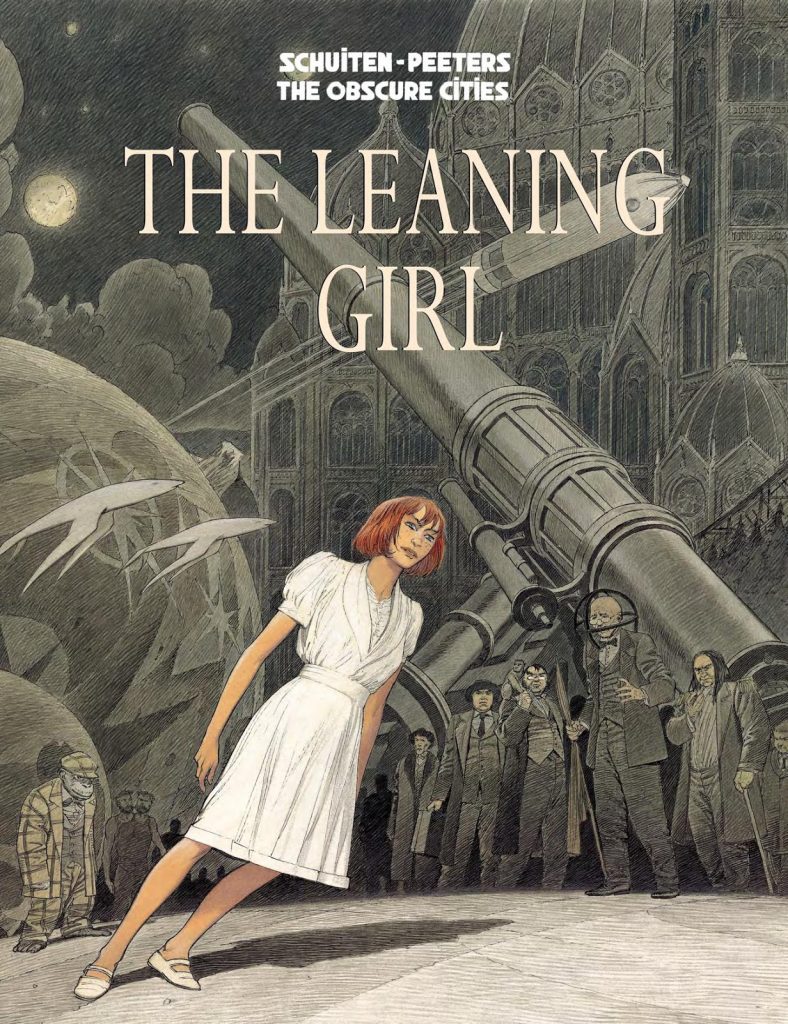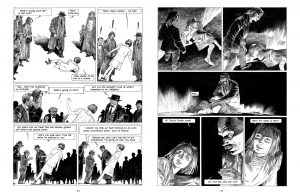Review by Woodrow Phoenix
The Leaning Girl is the story of Mary Von Rathen, an ordinary 13 year-old girl until one day a celestial event like a solar eclipse plunges the world into momentary darkness. When the light returns, Mary finds herself tilted at an angle to everything around her, as if she is permanently walking up an incline. The unprecedented event confirms the theories of Axel Wappendorf, a scientist at the Mont Michelson observatory. He has found a new planet–an anti-planet–on the other side of the sun, and he is determined to reach it. Elsewhere, Augustin Desombres, a demoralised artist, leaves Paris behind and buys an abandoned grand house deep in the French countryside. The house compels him to begin painting otherworldly landscapes and spheres floating in space.
The Leaning Girl is the sixth album to be set in the world of the Obscure Cities created by François Schuiten and Benoît Peeters. As well as the usual pen and ink artwork by Schuiten, this album uses treated photographs by Marie-Françoise Plissart, for the timeline featuring the artist Augustin Desombres who is modelled by Martin Vaughn-James. These real settings visually differentiate his world (our, ‘real’ world) from that of the other two characters. The reason becomes clear in the last third of this book.
In each of the Obscure Cities stories, the protagonists find themselves traversing vast distances to explore the environments of the Obscure Cities and reveal more connections between them. This time the journeys span dimensional planes as Mary, determined to find respite from many years of torment about her condition, thinks Axel Wappendorf may have the answers to why she leans, and even the map to a solution that will give her peace, one way or another. There is some sexual content that feels exploitative in the way it is used, particularly as the now-adult Mary is still treated like a child without the agency to make her own decisions about her future.
This book has been revised from the first two-volume French version, adding a colour section of Mary’s dream diary to the beginning and five previously unpublished pages of Schuiten’s sketches and layouts to the end. Schuiten and Peeters’ Obscure Cities series was awarded the Grand Prize in the Manga category of the 2013 Japan Art Festival with The Leaning Girl. They are the first foreign authors to win this award.





